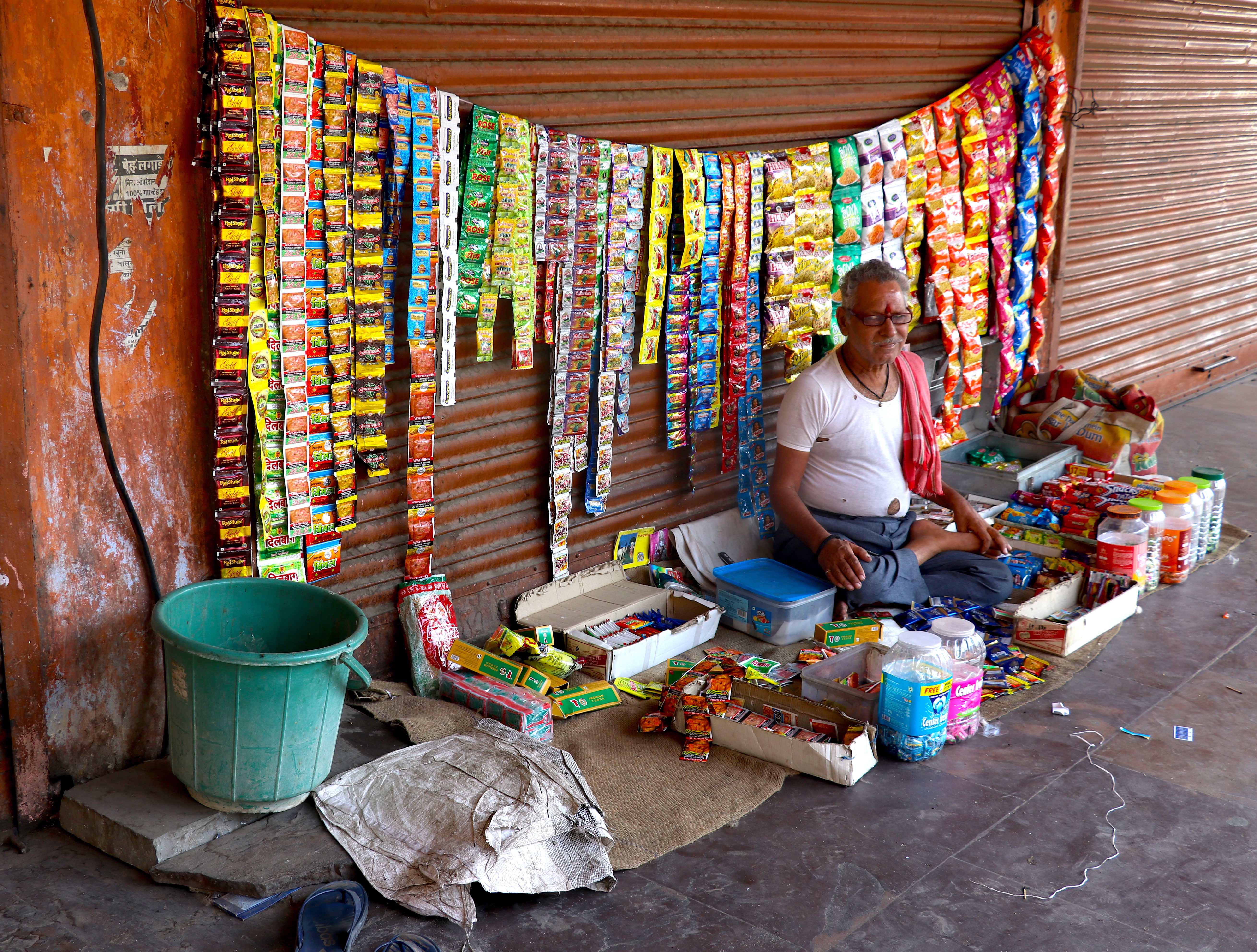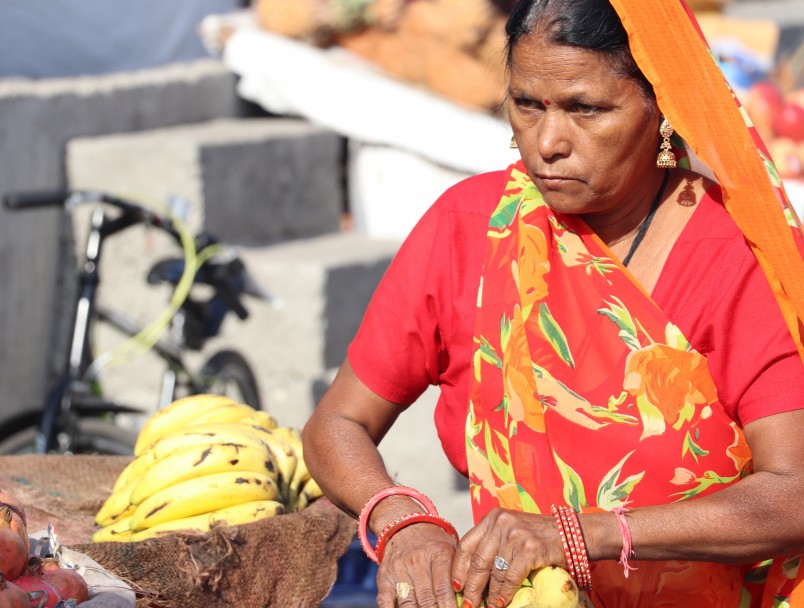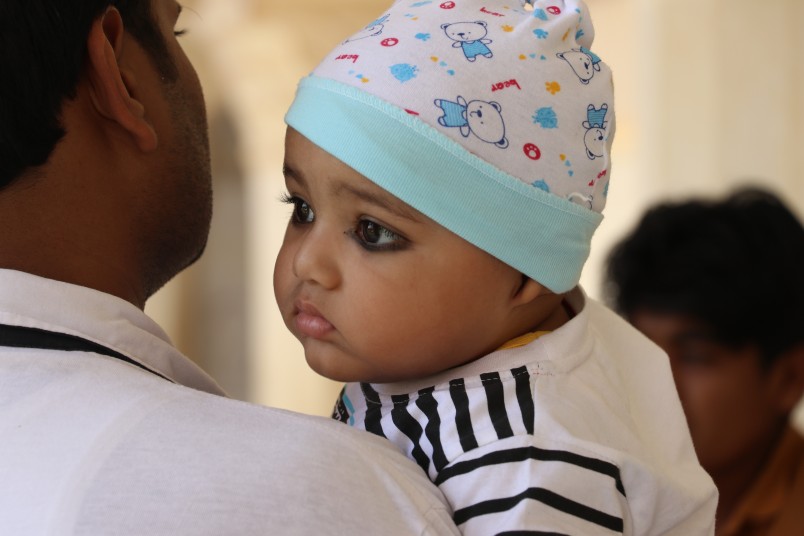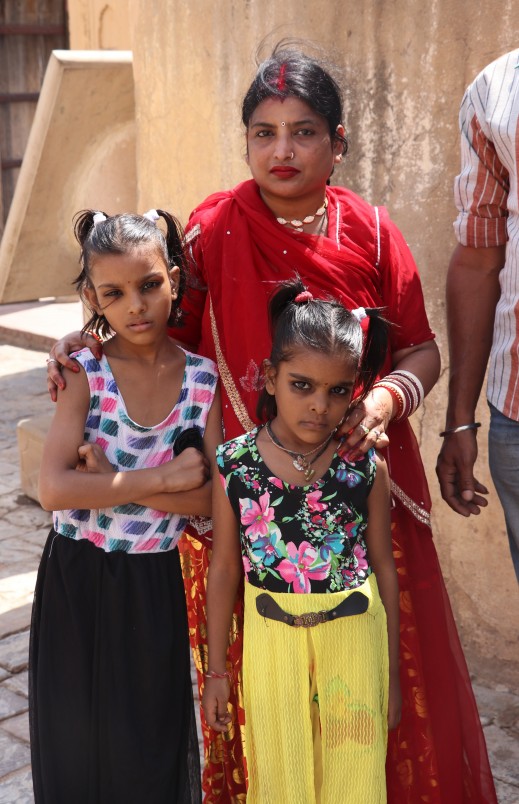
The Unexpected Colours of Jaipur
It happened immediately.
Driving from the Delhi airport, our taxi snaking across a 16-lane highway, our brains scrambled to decipher what we were seeing. Cars, motorbikes, even the odd tractor, passing each other with centimetres to spare. Gun-toting soldiers, urinating in a roadside field. Gas bottles strapped to bicycles, heating the pots of curry balancing perilously above.
Broken seat belts cast aside, we wound down the car windows and were deafened by a steady chorus of horns. Thick air, heavy with the smell of petrol, rubbish, and untreated sewage, filled the taxi. Some of our luggage had fallen victim to the hubbub of the Singapore airport; on our laps lay paperwork charmingly titled ‘baggage irregularity report’.
The colour crept up slowly. Ominous concrete walls, studded with shards of brightly hued glass. Vendors selling chewing tobacco, their garish plastic packets whipping wildly in the wind. Red, orange and yellow saris, richly pigmented with vegetable dyes.
Jaipur is known as ‘The Pink City’, but that title sounds contrived until you arrive. Soaring terracotta walls loom high above the bustling markets below. A blush-toned castle floats on a still lake. Even the dust that chokes the gutters has a slight rose flush.
Our tour guide has lived in Jaipur all of his life. Davendra takes us to the 425-year old Amer Fort that once housed the local royalty. We wheeze our way up the cobbled pathway, reaching an intricately decorated gate at the summit. The red sandstone walls stamped with greens, blues and oranges. The colours seem unreal- almost as if they have been recently added by modern hands.
When questioned, Davendra smiles knowingly.
“Gemstone dust”, he reveals.
“The sandstone was mixed with crushed gems, then the walls were polished with coconut oil for lustre”, he explains.
The fort is cluttered with tourists, but as we descend we notice the local families starting to arrive. The women wrapped in scarves, and the men dressed simply in trousers and button-down shirts. Their children are beautiful without exception.
We wondered it if was an anomaly when we first spotted it. A chubby-cheeked toddler, hoisted high on his father’s shoulders, his limpid brown eyes daubed with black. Then another child, this time a young girl, her eyes again ringed with dark oil.
More children pass, peeking shyly through heavy lashes, smudged makeup etched around their eyes. Davendra overhears our conversation.
“It’s to protect against evil spirits”, he says, “Plus, it shields their eyes from dust”.
“The parents collect carbon from the oil lamps to paint the children’s eyes”.
“The most prized charcoal is from the ghee lamp, or the mustard oil lamp”, he explains.
It seems that no matter where your spiritual leanings may lie, there seems to be something inherently magical about the colours of Jaipur.
Eliza Crisp
Eliza is in her final year of a Bachelor of Journalism at the University of Queensland. After taking an *extended* gap year to live in London, Vancouver and Melbourne, she has returned to Brisbane to finish her studies. Eliza has a raging tea habit, and an unhealthy addiction to washed rind cheese.



